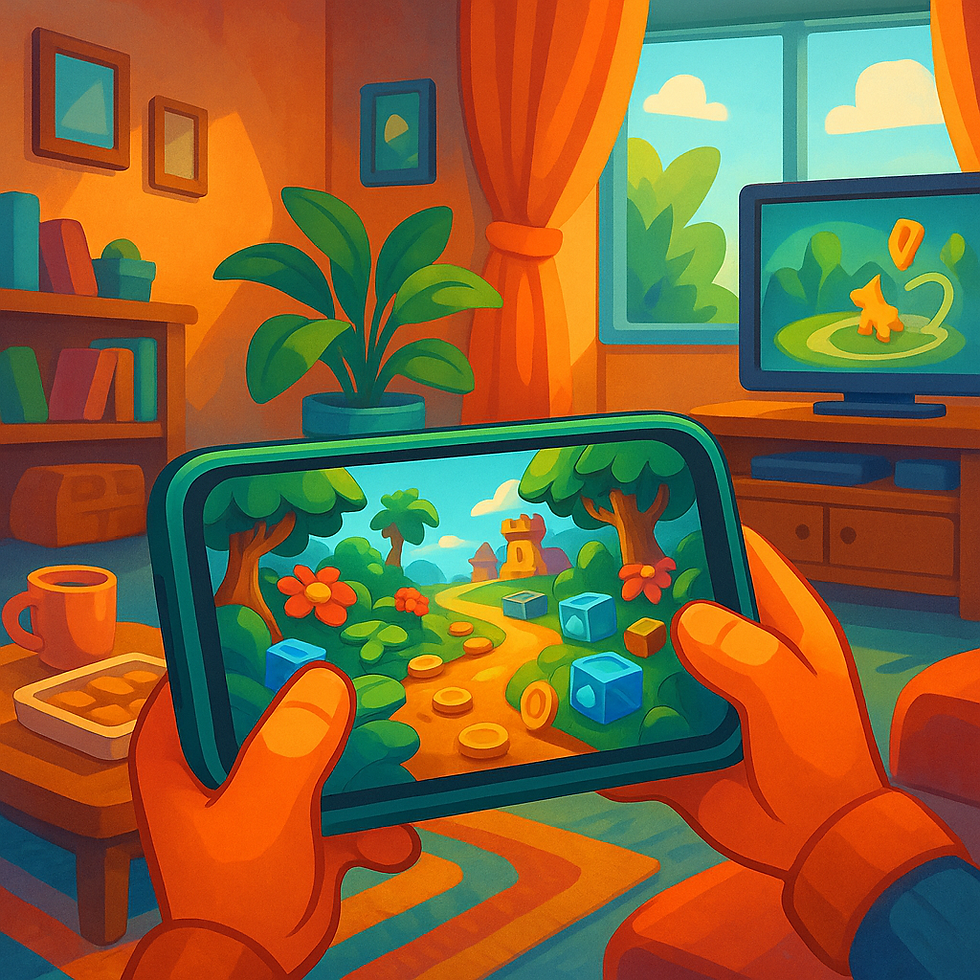Creating Darwin 3D Model
- Oceanty

- Jun 27, 2023
- 3 min read
Updated: Oct 23, 2023
In the vibrant realm of mobile video games, captivating characters play a pivotal role in drawing players into immersive virtual worlds. Creating a compelling 3D model for a character requires a harmonious blend of artistic vision, technical expertise, and an understanding of the game's requirements. In this blog, we'll dive into the process of crafting a 3D character model Darwin for our mobile video game Tough Turtles, exploring the key steps and considerations that shape the development of these virtual personas.
Step 1: Conceptualization and Design: Before breathing life into a character, it's essential to start with a solid concept and design. This phase involves brainstorming ideas, sketching rough concepts, and refining them until a clear vision emerges. The character's personality, role in the game, and visual style must be carefully considered to ensure they align with the game's overall aesthetic and target audience.

Step 2: Building the 3D Model: Once the concept is finalized, it's time to bring the character to life in a 3D digital environment. Skilled 3D artists employ various software tools like Maya, 3ds Max, or Blender to sculpt and shape the character's virtual anatomy. Starting with a basic mesh, they refine the model by adding intricate details, defining proportions, and emphasizing unique features that give the character its distinctive look. This phase requires a keen eye for anatomical accuracy, proportions, and attention to detail.

Step 3: Texturing and UV Mapping: After the model's structure is complete, it's time to add color and texture. Artists create a UV map, a 2D representation of the 3D model, which helps to "unwrap" the model's surfaces and apply textures accurately. They then use specialized software like Substance Painter or Photoshop to create intricate textures, paying attention to details such as skin, clothing, accessories, and other surface characteristics. The goal is to breathe life into the character by adding depth, realism, and visual appeal.



Step 4: Rigging and Animation: To make the character come alive in the game, it needs to be rigged and animated. Rigging involves creating a skeletal structure for the character, with joints and control points that allow for movement and manipulation. Once the rig is in place, animators use keyframe or motion capture techniques to bring the character to life, animating actions such as running, jumping, attacking, or interacting with the game's environment. Smooth and fluid animations are crucial to immerse players in the character's world.

Step 5: Optimization for Mobile: As mobile devices have hardware limitations, optimizing the character model for performance is vital. The 3D model's polygon count, texture sizes, and shader complexity must be carefully optimized without compromising visual quality. Techniques like LOD (Level of Detail) models, which switch between lower and higher detail versions based on the character's distance from the camera, can help balance visual fidelity with performance.

Step 6: Iteration and Quality Assurance: Creating a polished 3D character model is an iterative process. Multiple rounds of feedback and revisions may be necessary to refine the character's appearance and ensure it aligns with the intended vision. Collaboration between artists, designers, and developers is crucial to achieving the desired outcome. Rigorous quality assurance testing helps to identify and address any visual or technical issues before the character is implemented into the game.
Crafting a 3D character model for a mobile video game is a meticulous and collaborative process that blends artistry and technical skills. From conceptualization to final implementation, each step contributes to the creation of a captivating virtual persona that engages players and enhances their gaming experience. As technology advances, the potential for more realistic and immersive character models continues to expand, promising an exciting future for mobile gaming and the art of character design.




Comments